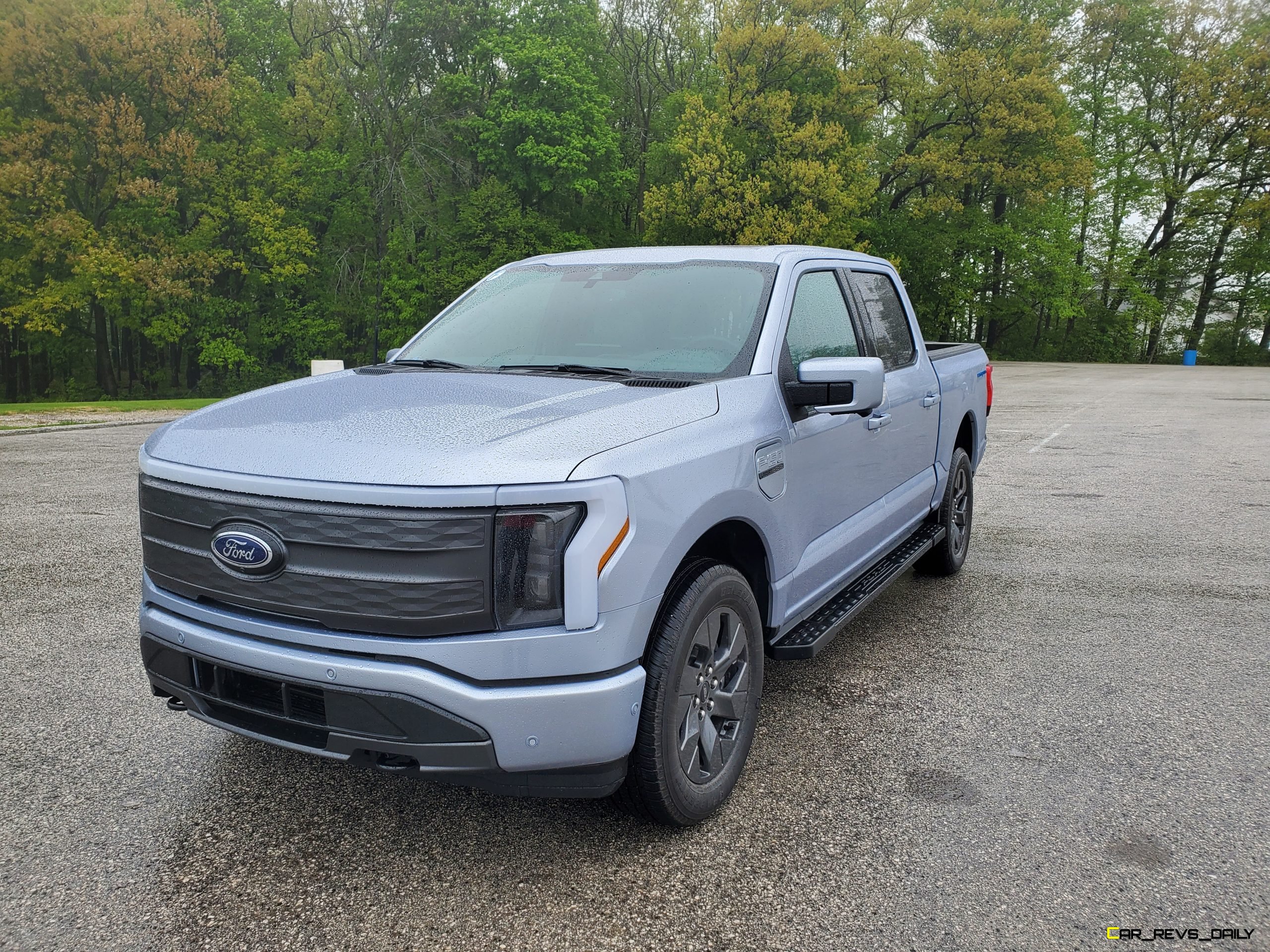The 2022 Ford F-150 Lightning is arguably one of the most highly anticipated EVs in recent memory. While it was beaten to production by the Rivian R1T, Ford is still in a position to make a splash in the EV pickup wars, especially since the Tesla Cybertruck has still not entered production despite repeated promises by Elon Musk and Tesla representatives. But does the Lightning give the F-150 the perfect opportunity to dominate another pickup market niche, or is it an evolutionary dead end for an icon?
F-150 Lightning Styling Combines Familiarity With Slick Touches
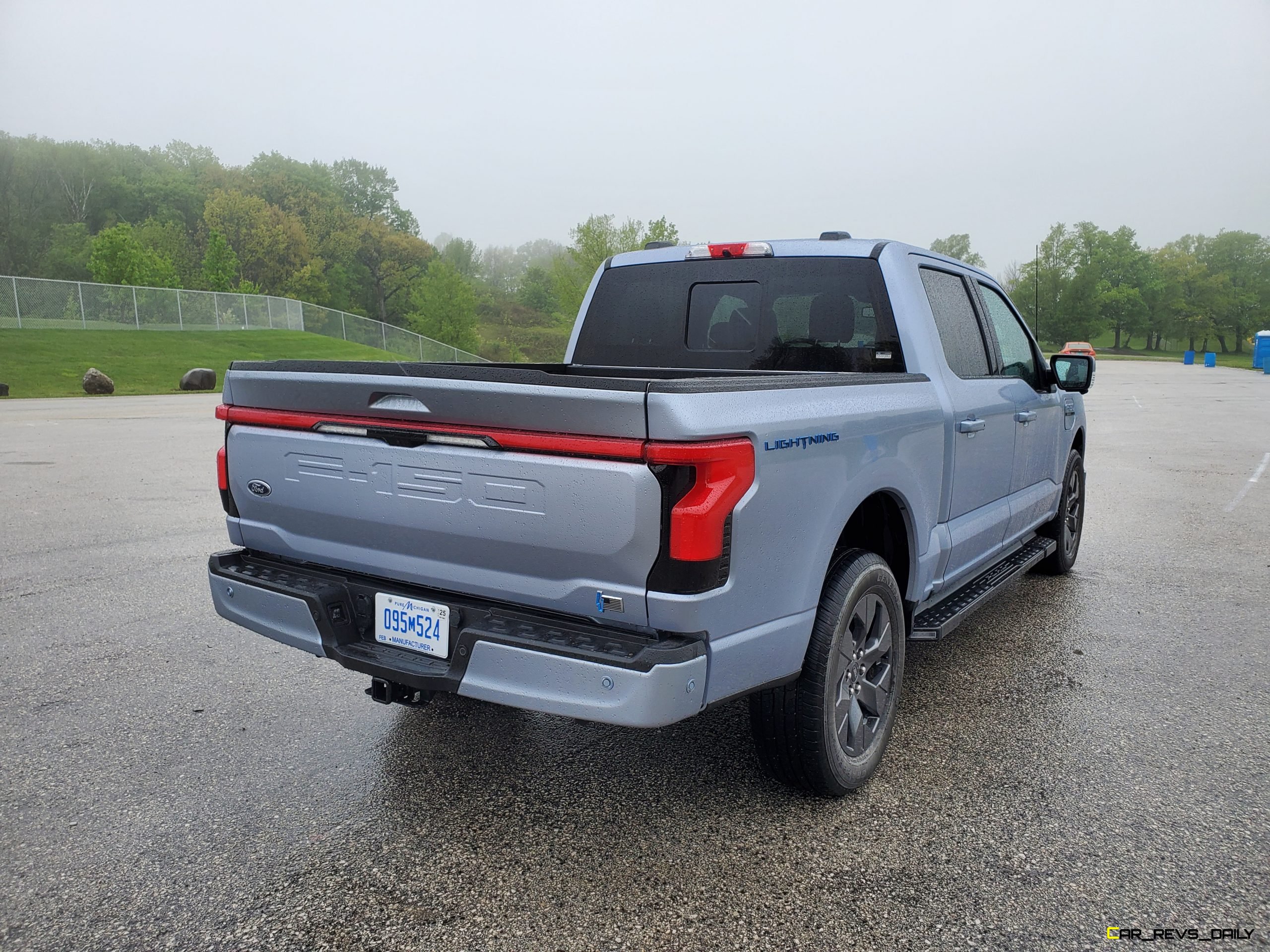
When you first lay eyes on the F-150 Lightning, you’ll be surprised by the fact that it still manages to look like a traditional pickup. Unlike some of its rivals that have pitched the tried and true shape of the traditional pickup truck for wild futuristic-inspired styling that maximizes aerodynamics and looks more at home on Star Trek, the Lightning’s look is very similar to a gas-powered F-150. Granted, the front fascia is revamped to incorporate new headlights, a grille panel, and a reworked front bumper, it still has the F-150 core look intact.
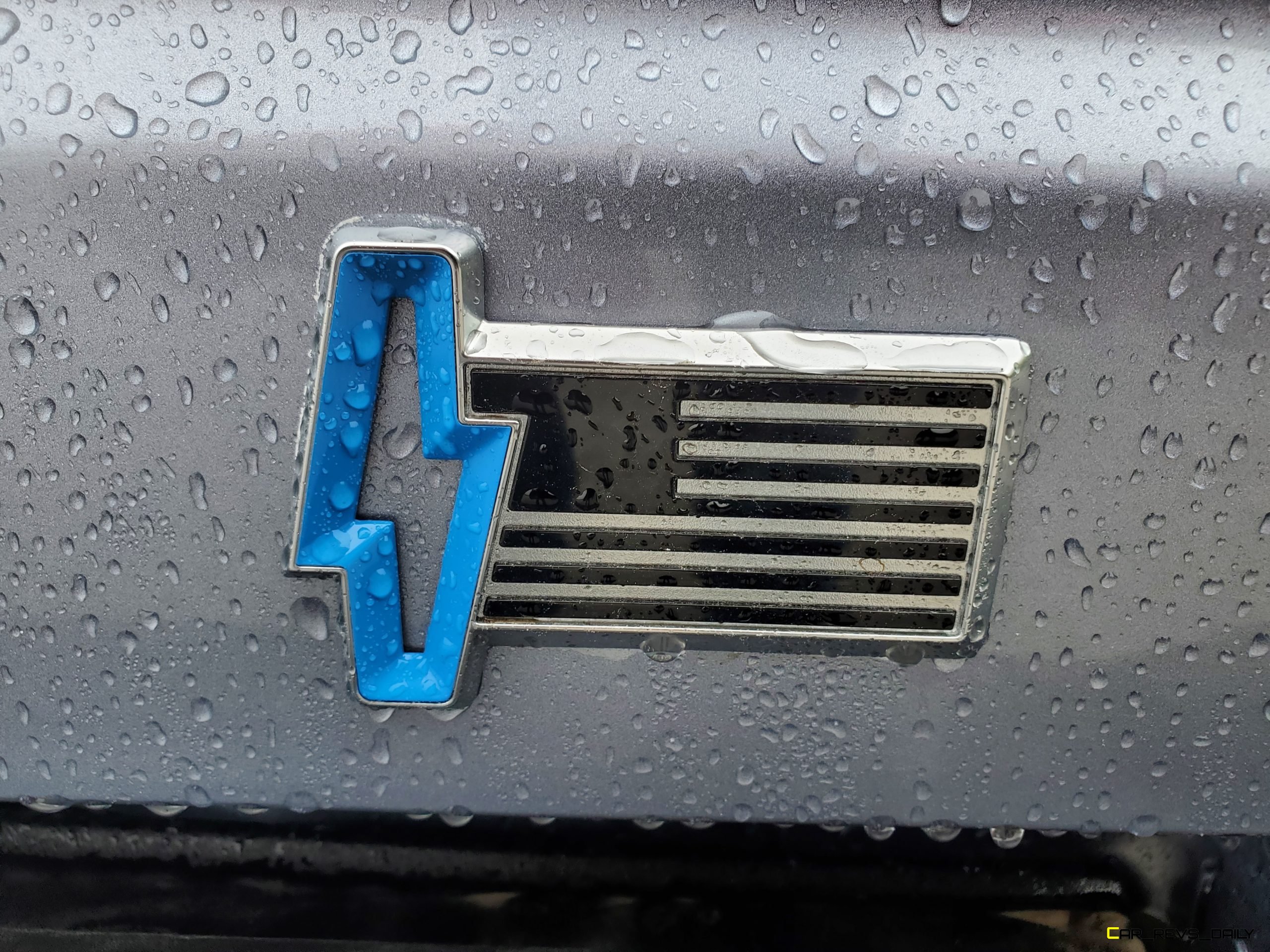
This ability to maintain its core heritage has served the F-150 well over the years, and whether it’s a trail-busting Raptor, the axed F-150 Lightning, or even this EV model, it’s a welcome breath of fresh air in a segment where rapid change is the order of the day. The truck’s side profile leads the eye to the rear of the truck, where an integrated lightbar in the tailgate unifies the taillights and works well with the incorporated spoiler assembly. F-150 Lightnings are still an elusive sight in Metro Detroit and our time with the truck occurred during MAMA’s Spring Rally Event in Elkhart Lake, Wisconsin. The Lightning comes in four distinct trim levels (Pro, XL, Lariat, Platinum), but our brief time was spent with the Lariat, the second most luxurious model in the lineup. The Lariat model has always been Ford’s way of adding some extra juice to the XLT, and our example stood out thanks in part to its blacked-out 20-inch alloy wheels, which blended nicely with its silver-hued paint.

But it’s what lurks under the skin that truly matters here. For example, the front hides what Ford calls the “Mega Power Frunk,” with the space not only big enough to swallow an impressive amount of cargo but it’s also washable, and can hold water and other liquids that can be drained out via incorporated drain holes and it even houses hidden power outlets to help power accessories when it’s not being used as a rolling cooler. The bed also comes with its share of tech, including an onboard power generator and many work-focused assistance features that have become mandatory on the F-150 lineup over the years.
F-150 Lightning Interior Is Part I-Pod, Part Work Truck
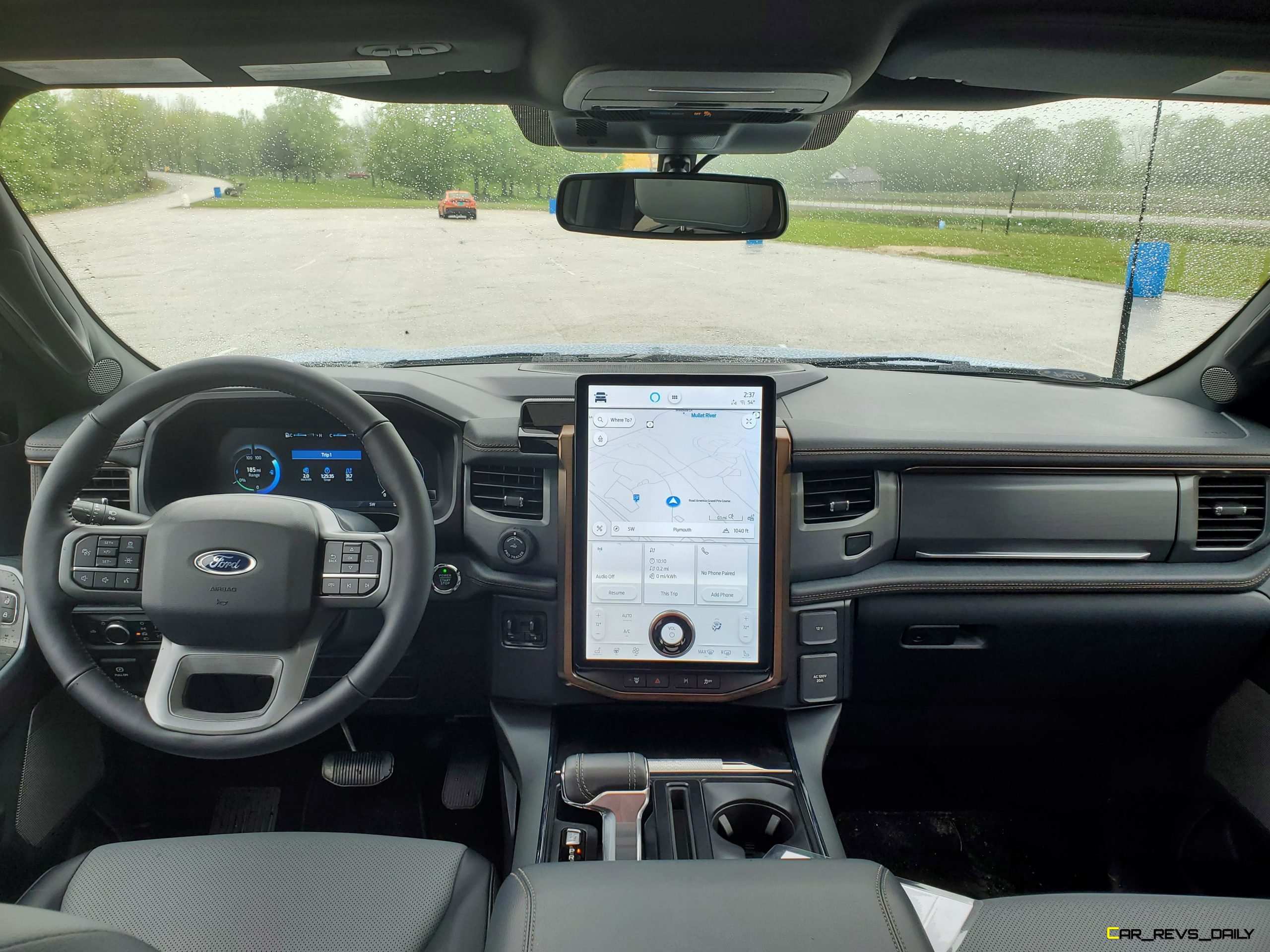
Slip inside the F-150 Lightning, and you’ll discover that, like the exterior, the interior is roughly the same as a typical ICE F-150 model and retains some of the core design elements that made its debut on other F-150 models. However, the Lightning stands out in the way it handles technology, with all models coming standard with a massive 12-inch touchscreen infotainment system. This system is lifted from the Mustang Mach-E and is one of the biggest in the pickup segment. Buyers looking for even bigger real estate can opt for an optional 15-inch screen though they will have to move up to either the Lariat or the Platinum model to get access to it. Occupants will have plenty of room to stretch out and relax thanks to the crew cab layout, which is the only cabin layout offered on Lightning.
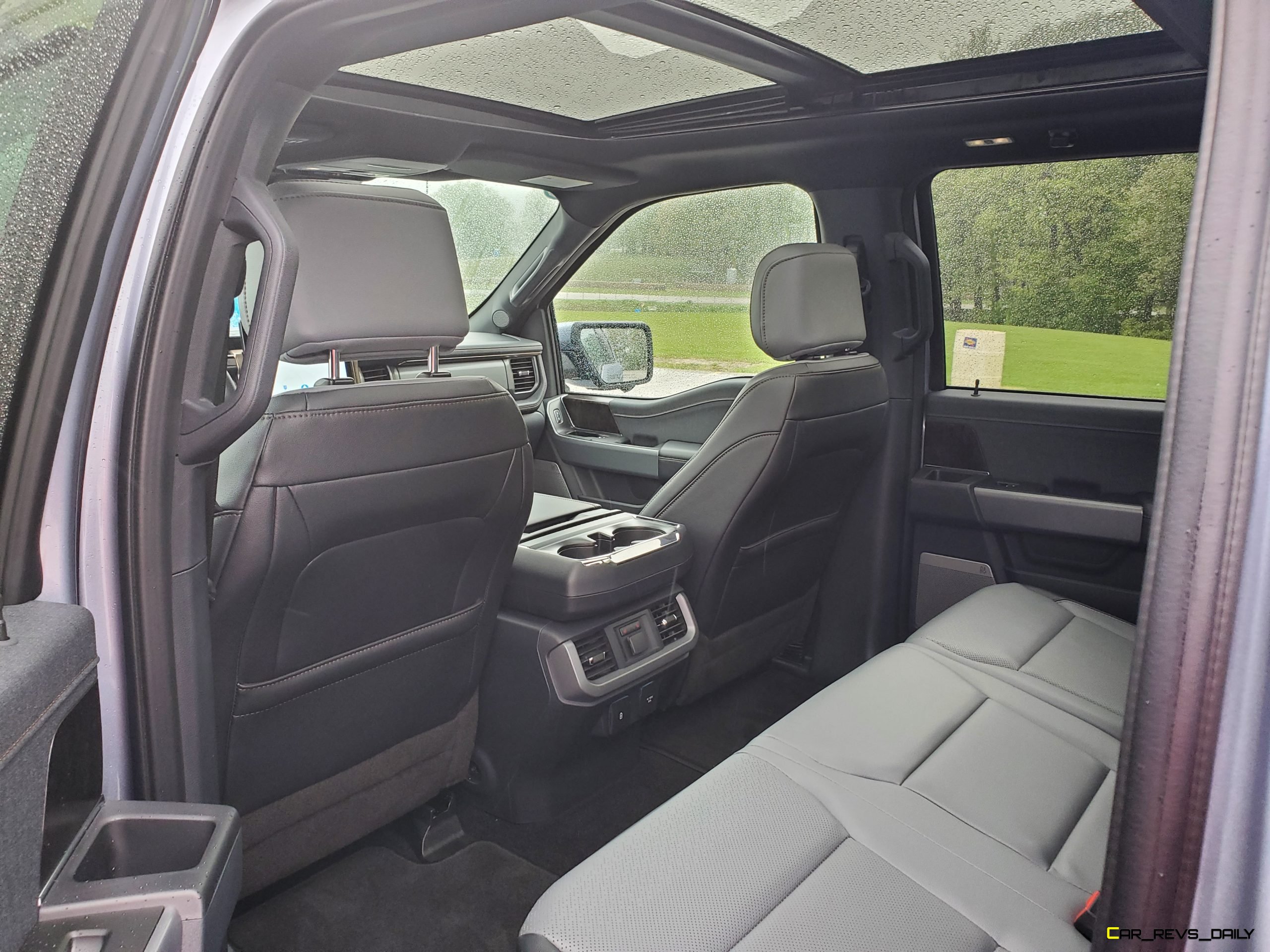
Passenger space in the F-150 Lightning mirrors that of other F-150s, with front passengers enjoying plenty of head and legroom while rear passengers have plenty of room to stretch out and relax on long trips. This abundance in space allows it to have an edge over the Silverado EV and the Rivian R1T, but at the same time, Ford’s insistence on familiarity may cause the Lightning to be passed over by younger buyers looking for a more expressive styling statement, especially when compared to the Rivian. However, for other buyers, especially corporate fleet buyers, the Lightning’s if it ain’t broke, don’t fix it personality may appeal to them, especially when it comes to formally servicing the truck.
Battery Size Plays Key Role In Lightning Performance

All F-150 Lightnings come with a standard dual-motor layout and all-wheel drive but unlike some other EV trucks on the market, these items will not dictate what formal performance items you will have. Instead, the type of battery pack equipped will be the determining factor in this regard. The Standard Battery pack is the base choice, allowing the Lightning to produce a combined 452 hp. Opting for the Extended Range battery raises that figure to 580 hp, with the 775 lb-ft of torque remaining unchanged for either setup.

Performance is very impressive, especially for a truck this big, with our Lariat grade example making the sprint to 60 mph in a swift 4.0 seconds thanks to the aid of its Extended Range battery pack. Our tester will not be a sports car by any means, but we were impressed with the handling on hand, with our rig having less body roll than some of the ICE-equipped F-150 models that we have driven over the years. The Extended Range battery also plays a role in helping the truck reach its max 10,000 lb towing limit with the Standard version being capped at 7,700 lbs. However, the numbers are flipped when it comes to payload, with the Extended Range model only capable of hauling a mere 1,800 lbs of stuff while Standard models get 200 lbs extra and check in at an even 2,000 lbs.
As for range, the F-150 Lightning has it in spades, with base models getting up to 230 miles of range while the bigger battery pack boosts it to 320 miles. Our time with our tester was brief, but Ford revealed that Lightning owners will not only be able to charge at public DC fast charging stations and that the truck can charge its way up from 15 percent to 80 percent charge in under 45 minutes.
Value Quotient
Pricing for the 2022 Ford F-150 Lightning starts at $39,974 for a base Pro model, with the XLT variant starting at $52,974. As you go higher up the trim ladder, the pricing goes up accordingly, too, with a range-topping Platinum model starting at $90,874. Our Lariat grade example is less of a gut punch to the wallet, with those starting at $67,474. Options on our tester helped nudge the price past $70,000, and that’s before any green credits, and other fees are applied to the mix.
However, while Ford’s online configurator has a set price structure, things could be very different at some Ford dealers in regards to markups. An egregious example we found (via our friends at Markup.org) is a Ford dealership in Idaho charging an extra $20,000 for a Pro model, pushing the base price over $50,000. While the bulk of these markups is due to a shortage of inventory and COVID-related production challenges, it also serves as a reminder for potential Lightning buyers to shop around multiple stores to try and find a deal that’s right for them and their wallet.
If you find a dealership willing to negotiate, the 2022 Ford F-150 Lightning will be a wise purchase in the long run. It not only manages to take the F-150 in a bold new direction, but it also manages to do so without scaring off loyalists, thanks to its balanced mixture of familiarity and advanced technology. Look for the F-150 Lightning to be a key player for Ford’s electrified ambitions, especially as the company aims to rapidly expand its share in the growing BEV market and continue to explore ways of adding the technology to new vehicles segments. Hopefully, we will have the chance to have more time with the 2022 F-150 Lightning in the future to see id it can be a true everyday vehicle for most buyers.
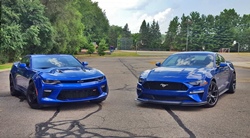
Carl Malek has been an automotive journalist for over 10 years. First starting out as a freelance photographer before making the transition to writing during college, his work has appeared on numerous automotive forums as well as websites such as Autoshopper.com.
Carl is also a big fan of British vehicles with the bulk of his devotion going to the Morgan Motor Company as well as offerings from Lotus, MG, and Caterham. When he is not writing about automobiles, Carl enjoys spending time with his family and friends in the Metro Detroit area, as well as spending time with his adorable pets.

